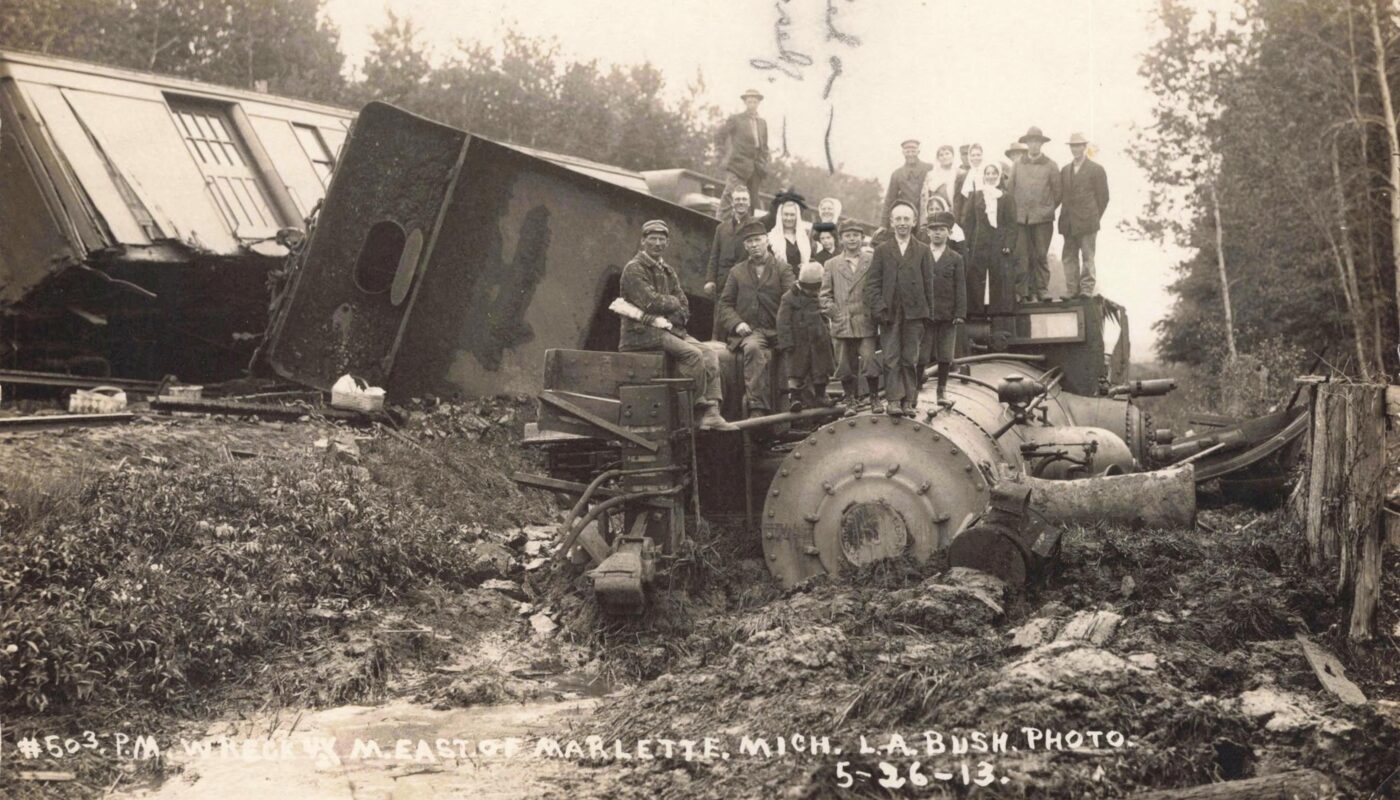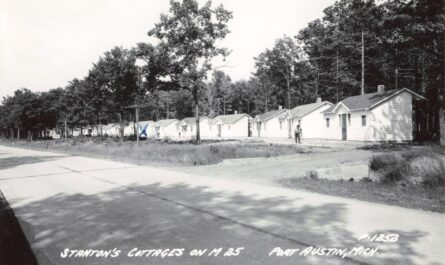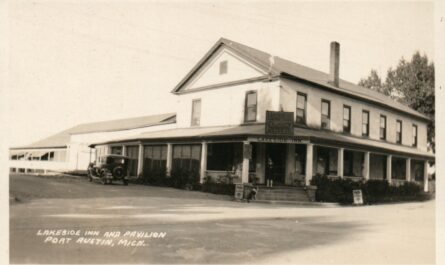The 1913 Marlette train wreck toppled a Pere Marquette train locomotive and tore up 300 feet of track—but miraculously, no one was killed in the crash.
MARLETTE, Mich. – On May 26, 1913, a Pere Marquette passenger train derailed just four and a half miles east of Marlette. Despite the violent crash that overturned the locomotive and heavily damaged several cars, no fatalities were reported. Photographs taken that day by L.A. Bush capture the wreckage—twisted steel, splintered cars, and a crowd of onlookers posing atop the wrecked engine.
The train had departed Port Huron that morning at 8:40 a.m. Passengers likely expected a routine trip westward across Michigan’s Thumb. Instead, they experienced a terrifying derailment caused by an equipment failure and a hasty substitution of engines.
Engine Failure and Hasty Substitution
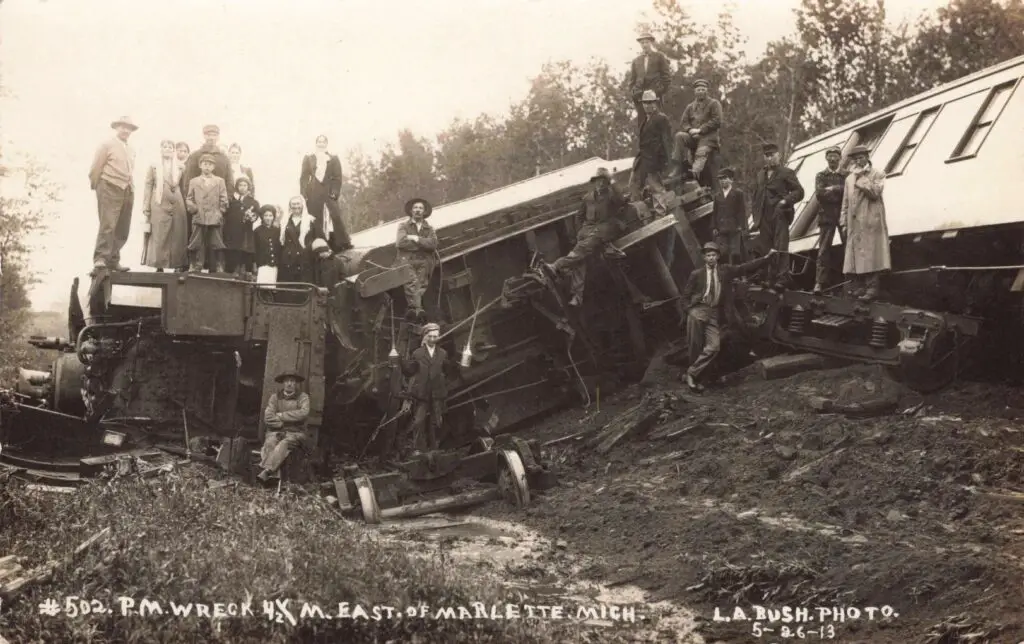
According to newspaper reports from the Saginaw Courier-Herald and The Detroit Free Press, the train’s original engine failed near Melvin. A freight locomotive was brought in to assist, but it added unexpected weight to the train. As it neared Marlette, the altered configuration may have stressed the rails. Tracks spread—or were possibly obstructed by debris from the earlier breakdown—causing the engine and cars to plunge into the ditch.
The engineer, W.H. Harmon, escaped through the cab window. Fireman Charles Knowlton was briefly buried in two feet of water and mud but was rescued unharmed. Baggageman George Balmer and conductor George Nixon also escaped without injury. Though shaken, all passengers survived.
A Scene That Drew a Crowd
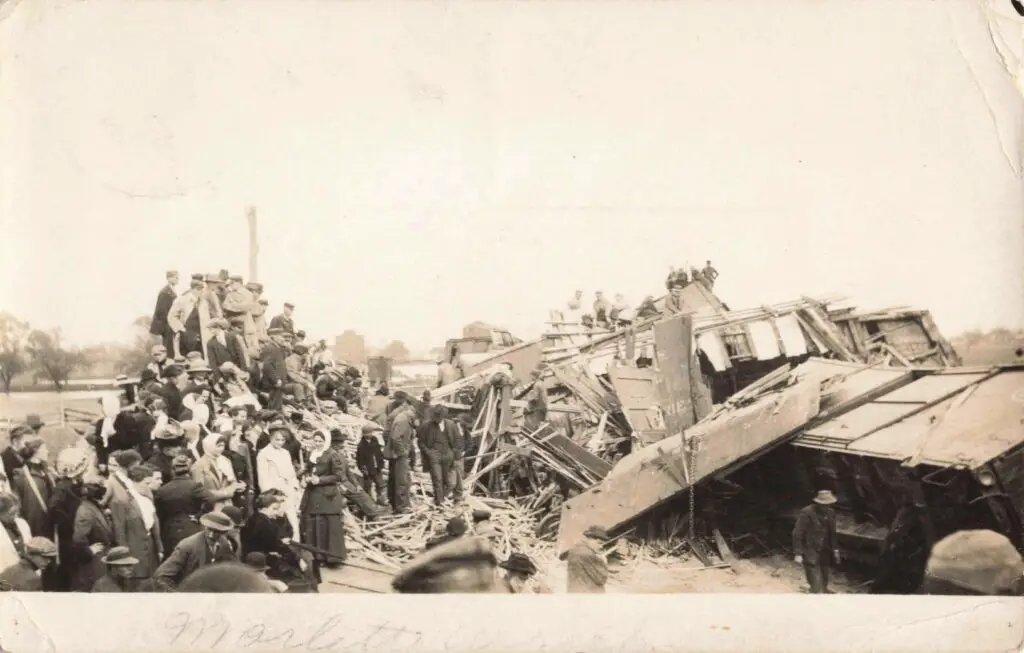
In the immediate aftermath, locals gathered at the site. The now-iconic photo shows men, women, and children climbing onto the wreckage, standing atop the crippled locomotive for a closer look. In the early 20th century, train wrecks weren’t just disasters—they were public spectacles.
The image was later turned into a real photo postcard (RPPC), a common practice at the time. It served as both documentation and souvenir.
A Dangerous Time for Rail Travel
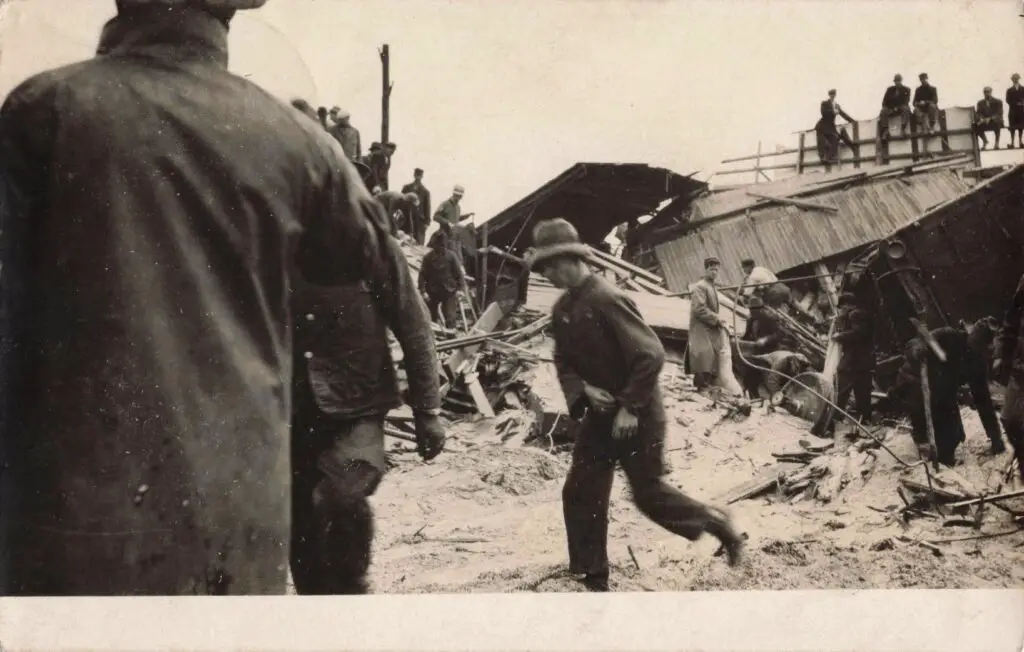
The Pere Marquette Railway, formed in 1900, was a major operator in Michigan and the surrounding states. By 1913, it had become one of the region’s key transportation providers, moving passengers and freight across the state. But the railroad industry, still reliant on steam power, was plagued by mechanical failures, poor track conditions, and limited communication systems.
Pere Marquette train derailments were not rare. According to Interstate Commerce Commission records from that era, the U.S. averaged hundreds of train accidents per year, many of them involving fatalities. Michigan’s rural lines were particularly vulnerable due to lighter maintenance and older equipment.
In this case, the combination of a failed engine and the use of a substitute locomotive may have exceeded the infrastructure’s safe limits. The result was a 300-foot stretch of destroyed track and a nearly overturned train—yet, remarkably, no deaths.
Wreck Cleanup
A wrecking crew was dispatched from Saginaw, and the line was cleared within days. The coaches, including a telescoped baggage car, were replaced. Service resumed, and the incident faded from public memory—except for the photo, which remains a striking artifact of early 20th-century rail history.
Today, a Forgotten Chapter
There’s little left to mark the spot east of Marlette where the wreck occurred. But the photo and its accompanying press coverage preserve a snapshot of a perilous era in Michigan rail travel—one where even a routine trip could end in disaster.

